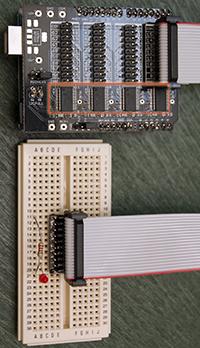I'm doing a little project that requires a lot of sensors. Right now I'm using 4, but i want to reach up to 60 sensors, and a minimum of 16 (for me that's a lot). So, I have an Arduino MEGA 2560, and I'm new to Arduino (Had a little experience with PIC before).
I've started my project with buttons and leds to simulate the sensor, but my sensors work normally HIGH, and when something pass in front of it, it goes quickly to LOW and back. English is not my first language so I don't recall the name of this sensor, kind of like movement sensor(?).
A lot of stuff pass normally, up to 50/s, in front of it, so it should keep "bouncing" between HIGH and LOW. But when I changed the buttons for the sensors, sometimes my processor won't react, and I think it's because the signal goes back to HIGH before the code reads it. Maybe it's not a problem when it's sensing lot of things, but I can't test it right now with a lot of sensors, and it's not something that can keep getting errors.
So I got to interrupts, reading the awesome gammon review. I understood a lot of new things that i didn't know and I searched for a interrupt Library, but the one I found can't use too many sensors.
I forgot to tell, but I'm using a touch 2,4" shield too, so a lot of interrupts pins can't be used.
Will I be able to use all the sensors I want? If not, could I do it with 2 Arduinos and 1 screen? Am i missing something about the interrupts? Where can I find something to help me?
Edit 1: All the sensor are the same

